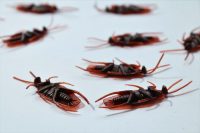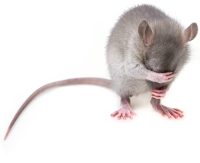In the food manufacturing industry, a well-trained workforce is essential to maintaining product quality, consumer safety and operational efficiency. In this line of work, everyone must know what they’re doing and be engaged with the task at hand. Yet, ensuring workers are trained, competent, and properly onboarded can be a challenge.
Time is one of the biggest impediments to employee onboarding and training. Most food manufacturers have limited time to offer training before getting new workers onto the floor, and it can be difficult to offer ongoing training in an efficient and effective manner. Part of this is due to the nature of manufacturing work. The production floor is a fast-paced, noisy environment where workers are engaged in time-dependent, manual activities.
Unlike knowledge-based professionals, it’s difficult to train manufacturing workers without interrupting the corporate workflow. Employees can’t be removed from their work for training purposes without disrupting the rest of production or cutting into manufacturing hours.
Subscribe to the Food Safety Tech weekly newsletter to stay up to date on the latest news and information on food safety and quality.
This results in high costs and limited opportunities for dedicated training times, leaving many food manufacturers heavily reliant on initial training and onboarding sessions. As a result, employees often complete their onboarding and initial training without fully grasping what they were taught.
In an independent study by the Center for Research and Public Policy (CRPP), workers across the food chain reported not being well-trained. Nearly one third (29.6%) of respondents felt they hadn’t received enough training to perform work safely, 37.2% felt their training was too complicated or difficult to understand, 20.6% said they received too little safety training before doing their job, and only 51.8% reported receiving enough on-the-job coaching.
We can’t onboard new food workers by dumping knowledge onto them during a few preliminary training sessions, then leaving them to work things out on their own. This can result in employees adopting poor work habits from co-workers, becoming disengaged, and leaving the workplace.
How To Bring New Team Members Up to Speed Quickly
Offering only a few information-packed training sessions or learning courses isn’t an effective way to train workers involved in motor skill-based work. Employees trained this way tend to find the information hard to understand, are likely to forget what they’ve learned, and may have difficulty translating theoretical knowledge into practical work tasks.
If you want to get new hires up to speed faster, offer learning that’s action-oriented, continual, and manageable. Employees, especially new hires, also need immediate feedback on whether they’re performing their work correctly. This requires direct, mid-task guidance and corrective observations rather than delayed video training.
After your initial onboarding and training, employees need ongoing training to reinforce initial learning, deepen knowledge, shore up weak spots, and provide updates. This is best done in brief stretches of around five to seven minutes. Longer learning sessions can overload workers, leading them to tune out, lose focus, and forget. Brief, tactical training sessions are far more effective and efficient, and can be used for on-the-spot training and knowledge refreshment.
Supplement these short training programs by placing multimedia training materials, such as videos or recorded reminders, in break rooms, locker rooms, and other areas where workers spend downtime. Offer mobile coaching tools, apps, and handouts for independent learning.
Peer support can be invaluable in onboarding and training new employees. Workers joining a new organization look to their co-workers to understand how things are done and what values are truly upheld.
By incorporating rapid skill acquisition tactics, environmental learning cues, and approved employee partnering or mentoring programs, companies can onboard and train new employees more quickly, while keeping training requirements manageable and efficient for the organization.
How to Keep Workers Safe and Happy
In the CRPP report, 60.5% of food production supervisors and managers felt that lack of training was the primary cause of workplace injuries within their facility. Employees who are well-trained, supported, and socially engaged report higher levels of job satisfaction and happiness. In addition, they are more comfortable letting higher-ups know about potential issues, leading to a safer work environment and end product.
Therefore, companies must consider cultural onboarding that includes constructive communication and social interaction with coworkers and supervisors, in addition to skill-based and protocol training.
Happy and satisfied workers experience high levels of social exchange with their organizations, leaders, and peers. Good communication allows them to share information, integrate into the culture, become more invested in their work, and achieve positive outcomes.
Manufacturers can support a safer, more productive, and happier working environment by facilitating productive communication on the floor.
Tools and Strategies That Support Effective Communication
Quality on-site communication can be achieved through strategically selected channels and technologies. Most organizations already have effective ways to broadcast communications and offer mass learning opportunities. For example, emails with safety reminders, tips, process guidelines, or recommendations can be blasted out to various employee segments. Video displays, posters, and other media forms can be placed around the environment to provide warnings or critical reminders, while apps and online courses can be used to facilitate independent, self-paced learning.
These are all, however, impersonal mechanisms that don’t connect workers with supervisors who can guide, assess, or correct their knowledge. The real challenge for food manufacturing has always been how to train employees while on-the-job.
Common challenges for management include spending enough personal time with new hires, correcting errors spotted from a distance, guiding workers without interrupting workflow and providing ongoing training without removing workers from the production line.
These specific issues can be resolved with technology that allows instant communication at a distance, such as two-way communication headsets. Two-way headsets enable one-to-one or one-to-many conversations, providing clear audio even on noisy plant floors.
Industrial communication devices can be used to facilitate ad hoc, personalized onboarding assistance or coaching from coworkers and team leaders. Trainers can use headsets to remain connected with new hires, provide training as needed, offer instant corrections, and assess entire groups at a time. To further boost onboarding, experienced peers can be offered headsets to guide new workers.
Food manufacturing has always been a tech-forward industry. Safe and efficient operations depend on the effective use of new technologies. By continuing to investigate and adopt new tools and strategies, manufacturers can continue to drive business objectives forward while bolstering on-the-job safety, performance, and employee satisfaction levels.






















